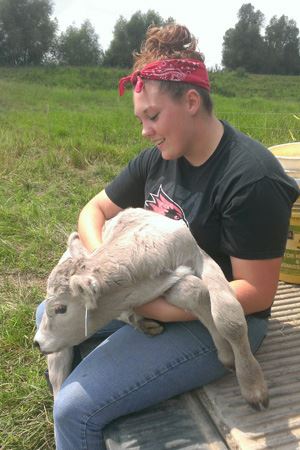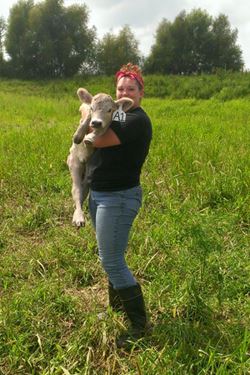|
Calving Season Begins At Barton Agriculture Research Center
GORDONVILLE, MO.
The first calf has been born during calving season this year at the Southeast Missouri State University David M. Barton Agriculture Research Center (ARC).
Named A1, the heifer calf was born on Aug. 24 to an Angus Simmental cow and a Charolais bull. About 50 other calves are expected to be born at the agricultural research center by October.
Jessi Stone, a Southeast student from Dongola, Ill., who is pursuing a Bachelor of Science in agribusiness with an emphasis in animal science, works at the center and helps process the calves after their birth.


“I was extremely excited about the birth of A1. This is my first calving season here at the ARC, so naturally I was excited anyway, but for her to be that smoky color, that was even more special. She is a beautiful little heifer, and I could stand in a pasture all day to watch her. The way people get about babies is the way I am about baby animals,” Stone said.
Stone, who is also in the pre-veterinary program at Southeast, has been doing the initial processing for A1, and will do so with the other new calves. She ensures both mother and baby are healthy. She checks the birth weight, the umbilical cord, ensures the calf is nursing, and makes sure the calf has an ear tag and identification number. She checks the body condition of the mother as well.
“I absolutely love it. It's amazing to see a calf open their eyes for the first time, and to watch the mother clean them and care for them. It makes my heart smile,” Stone said.
The 50 calves are expected to be mostly males and will be new to the agriculture research center. The center is a fall calving facility, so it aims to have calves in September or October when temperatures are more moderate, while other facilities have their calving season in March, April and May.
“We are very excited for this mix,” said Dr. Julie Weathers, a professor in the Department of Agriculture.
Most of the calves will be sold as either meat or breeding stock, according to Weathers. She said this year the center may keep some of the males and females for breeding stock, and plan to use some of the females as replacements to continue to grow the herd.∆
|
|